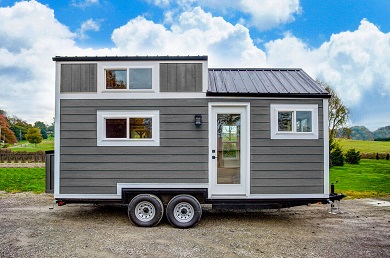Land use laws get scrutiny
The Oregon House Committee on Housing heard three bills this week aimed at offering another solution to the housing crisis.
Oregon has approximately 750,000 acres zoned Rural Residential. Oregon’s land is currently governed by Oregon's land use system, which first appeared in the form of
SB 100, The Oregon Land Use Act, passed by the Oregon in 1973. Individual Counties develop Comprehensive plans that follow the overarching rules within the Land Use Act. Rob Bovette, Legal Counsel, Legislative Director, with Association of Oregon Counties summed it up well. “If you have seen one Oregon county’s land use plan, you have seen one Oregon County’s land use planâ€. Meaning that no two Oregon counties plans are identical because no two counties in Oregon are the same.
HB 2705 would allow for construction of accessory dwelling unit (ADU) in an area zoned for Rural Residential with specific parameters:
- Parcel of land is at least 2 acres
- There is already a single-family home on the property
- The ADU is 900sqft or less and is located within 100ft of the existing dwelling.
Representative Pam Marsh (D-Ashland) raised concerns that the legislation could allow for the ADUs to be used as vacation rentals if the county approves it and that does not solve the housing crisis Oregon is facing. It was also noted by Mary McCurdy, Deputy Director of 1,000 friends of Oregon that “The short-term rental use poses two challenges: it increases the transitory population of those not accustomed to farming practices in farm areas, which we have seen poses conflicts and problems for farmers...â€
HB 2778 looks to change the date associated with the definition of “historic homeâ€. Currently it is defined as dwelling built between “1850 to 1945â€. This changed would define “historic home†as a dwelling built “before 1974â€. This simple change would then allow for rural residential properties to add ADUs to properties where the house was built before 1974 thus potentially increasing housing availability in rural areas. Emma Land, Legislative Coordinator, Oregon Department of Land Conservation and Development, testified that “As this expanded definition of “historic home†would lead to increased density, we will likely see an impact on existing infrastructure, including roads and a county’s ability to respond to public safety emergencies. Higher densities near our rural working lands will likely create more conflicts between farmers and ranchers and the people living nearby. Additionally, the department is concerned that
HB 2778 would put more people and property at risk from wildfiresâ€.
HB 2655 prohibits counties from establishing minimum lot size of more than 1 acre for residential zoned land. The current lot size minimum is 2 acres. Two of the bill sponsors, Representative Brock-Smith and Representative Zika testified that the intent is simply to allow for more development on existing RR land to help rural Oregon Counties with their housing crisis. They went on to express that land use changes to assist with the housing crisis in the Oregon have already been addressed within the urban growth boundaries, this just looks outside of that area for an additional solution of the housing crisis.
A D V E R T I S E M E N T

A D V E R T I S E M E N T
Carol Macbeth with Central Oregon Land Watch, stated that the organization “strongly opposes decreasing minimum lot sizes in rural residential areas. A one-acre minimum lot size will result in sprawling rural residential development that directly conflicts with neighboring farms and ranches. According to the American Farmland Trust, low-density residential development poses the greatest risk to Oregon's working farmlands.
In addition, there is still some confusion surrounding the intent of the bill as was expressed by Multnomah County Department of community Services land use Planning Division. “It is not clear whether the amendment is intended to be limited to specific circumstances involving ADUs in rural residential zones, as regulated by
ORS 215.501, or if it is intended to apply broadly to all rural residential zones independent of whether an ADU is proposedâ€.
It will be up to the committee if these bills receive a work session and move forward “as is†or in some amended form. However, several things are clear. Oregon is in the midst of a housing crisis, one single solution will not solve the problem, and Oregonians are passionate about land use laws.
--Terese Humboldt| Post Date: 2021-02-05 08:46:53 | Last Update: 2021-02-05 09:36:02 |







